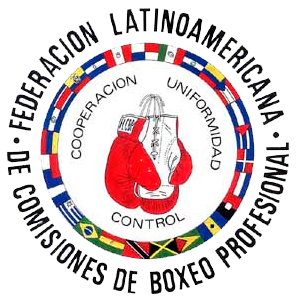We have seen the break through of fairer sex in what used to be a male dominated sport and we must do everything that is possible for women to participate in boxing without having to suffer because of lack of knowledge in the physiology of the female athlete.
Our trainers will soon be bombarded with the young woman who wants to box and the trainer must have a basic knowledge and be able to give sound advice in this situation.
Boys and girls have the same equal capacity to perform in all physical events. But at the age of puberty, the bodies of the male and female changes to the typical form denoted by the secondary sexual characteristics. These changes are brought about in the male by the hormone testosterone and in the female by estrogen.
The difference in strength between the male and female is primarily due to the anabolic effects of testosterone on the muscles. Men tend to have a higher ratio of lean body mass to body-weight and a greater capacity to increase muscle mass and strength with training.
Strength training programs for the female can increase strength considerably but it is not likely that the female would reach the same level of strength as that of the male. For this reason, male boxers should not compete with female boxers even if they are in the same weight category.
This brings us to the problem of certifying that the female boxer is really a female and not a male. Most people have a clear idea of the feminine form as opposed to the masculine form. But there might be borderline cases where the differentiation is not clear.
The sex of an individual is determined by the chromosomes, which in development must give rise to an individual with the correct sex glands. These glands will produce the appropriate sex hormones, which will in turn form the correct sex organs.
Basically, the chromosomes, which give rise to the male, are the XY chromosomes and the female XX chromosomes.
Testing for femininity is done by taking a smear from the mouth of the female competitor and looking for the XX chromosomes in the cells and this has been an ongoing process at the Olympic Games.
The effects of the menstrual cycle.
The menstrual cycle is divided into phases beginning with the first day of menstruation. The cycle is about 28 days and could range from 21 to 35 days. Menstruation lasts for about 2 to 7 days and this is followed by hormonal changes until the next menses begins.
Ovulation takes place on about the 14th day of the cycle. Just prior to the period, in some women, there is a pre menstrual syndrome, which is characterized by mood changes, depression, and tenderness of the breast and water retention leading to weight gain.
During the menstrual period, some women experience abdominal and lower back pains otherwise known as dysmenorrhoea. In most cases, this pain can be relieved by the taking of nonsteroidal antiflammotory drugs ( NSAIDs)
It has been shown that regular exercise can counteract the symptoms of the premenstrual syndrome.
With intense training, there can be adverse effects on the normal menstrual cycle
such as- :
1. Delayed menarche– The onset of the period can be delayed to age 16.
2. Secondary Amenorrhea – No menstrual cycle for about 3-4 months once the cycle has been established.
3. Anovulation – The normal cycle occurs without the development of an ovule.
Oral contraceptives are used extensively in women as a form of contraception to prevent pregnancy and there is no evidence that they cause adverse effects on athletic performance.
It has been shown that some women give a better performance during a precise stage of the menstrual cycle. Adjusting the time of menstruation so that the competition dates coincide with the time of maximum efficiency can be accomplished by the use of hormones such as those found in the oral contraceptive pills.
In professional boxing, which is a single competitive event, adjustments can be made three (3) months prior to the fight so that the boxer can compete during the period of the cycle when she has proven to perform best without medication.
Pregnancy
Exercise during pregnancy contributes to ease of parturition. But the intensive training for boxing is definitely contraindicated during pregnancy. Some women with a poor obstetric history are advised to rest during pregnancy.
Following delivery, exercise can assist the process of recovery but such exercise should be relatively light to start and increase in intensity as training proceeds. There is no reason why boxing should not be taken up again after normal childbirth.
Protective gear
Padded protection of the breast is necessary in women boxers. The padded bras serve to dissipate the force of a blow throughout the whole breast and so prevents localized trauma. Such trauma may cause a haematoma and damage to the breast tissue. This lump presents as a hard mass in the breast which indistinguishable from a cancer of the breast and must be further investigated. The bras should be also be fitted firmly so as to prevent excessive breast motion.
Protection of the lower abdomen and the groin is also important in the female boxer so that accidental trauma does not cause severe damage. The lips of the vagina are very vascular and a direct blow to that area can be cushioned by a protector thus preventing a haematoma.
In closing, it must be recognized that boxing among women will increase just as in all the other sports. Our male coaches and trainers must be prepared to cope with this influx of female boxers and I can assure you that this will be only for an interim period until the female coach and trainer in boxing are ready to take over the mantle of preparing the female boxer.
















